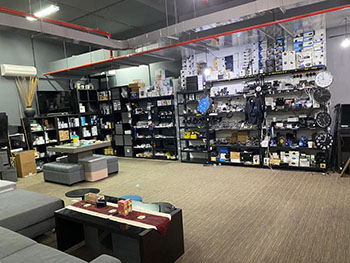Hand, Foot and Mouth Disease (HFMD)
 Hand, Foot and Mouth Disease (HFMD) is a viral infection caused by a group of enteroviruses and is most commonly caused by the Coxsackie virus.
Hand, Foot and Mouth Disease (HFMD) is a viral infection caused by a group of enteroviruses and is most commonly caused by the Coxsackie virus.
Signs and symptoms
- Fever
- Sorethroat
- Rash (flat or raised spots) or small blisters on palms of hands, soles of feet, or buttocks.
- Mouth ulcers on the inside of the mouth or sides of the tongue
- Poor appetite
- Lethargy Mode of spread
It is easily spread from one person to another by droplet, saliva as well as by coming in contact with fluid from inside the blisters. It can also be in faeces for up to several weeks after being infected Incubation period.
The incubation period of HFMD is 3 to 5 days. Symptoms usually start 3 to 7 days after catching the infection. Symptoms can last between 7 to 10 days.
Infectious period
A child infected with HFMD is contagious throughout the duration of the illness. They cease to be contagious when their illness resolves.
Prevention
All centres must maintain high standards of personal and environmental hygiene to minimise the risk of HFMD transmission.
- The overall health of the children should be checked daily upon arrival at the childcare centre. Children with any unusual symptoms or behaviour should be removed from the child care centre for further assessment. This is an important measure in preventing the mode of spread of infectious diseases to other children.
- Children with HFMD should stay at home, away from school, child care, playgroup, kindergarten and crowded public places until the fluid in the blisters has dried. During this period, contact with other children should be avoided until the child recovers.
- Both staff and children must wash their hands frequent enough to maintain their hands in a clean state.
- Handwashing Staff and children should follow the following recommended handwashing procedures to reduce the risk of disease mode of spread in the centres
- Use liquid soap and running water;
- Run hands vigorously as they are washed for at least 10 seconds;
- Wash all surfaces, including back of hands, wrists, between fingers and under fingernails;
- Rinse hands well after washing;
- Dry hands with single-use towel
- Staff should wash their hands:
- When they come to the centre in the morning;
- Before they prepare or serve food;
- After they change diapers, clean up or wipe the nose of a child;
- After contact with blood or body fluids such as fluids from the nose, mouth and chest as well as from inside the blisters ;
- After they have been to the toilet, either with a child or by themselves;
- After handling pets, pet cages, or other pet objects;
- After outdoor activities (e.g. playing with children in the playground);
- Before giving or applying medication or ointment to a child or self;
- Before going home
- When they arrive at the centre;
- Before they eat or drink;
- After they use the toilet;
- After they come into contact with a child who may be sick;
- After having their diapers changed;
- After playing on the playground;
- After handling pets, pet cages, or other pet objects;
- Before going home
- Do not share food, utensils, drinking cups, toothbrushes or towels with other children.
- Proper disinfection of articles such as toys, eating utensils and towels contaminated by droplet, saliva, vesicular fluid or faeces of infected cases
Communal Toys
- Toys or appliances that are contaminated by nasal or oral secretions should be cleaned before they are used again.
- Only washable toys should be used with diapered children. Separate toys should be provided for each child group so that no sharing should occur between groups. This will limit the exposure of the infectious agents to only a single group during disease outbreaks.
- Hard surfaced toys should be washed and disinfect with household bleach regularly.
- Stuffed toys should be discouraged, i.e. toys that cannot be sanitized should not be allowed.
- A toy that is mouthed by a child should be washed and disinfected before other children handle it.











